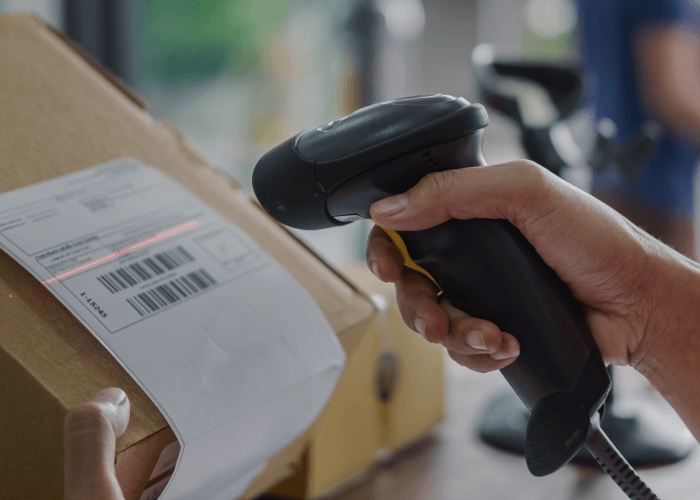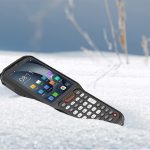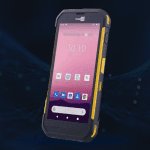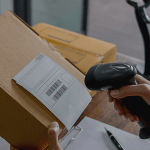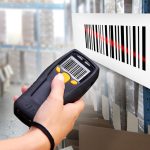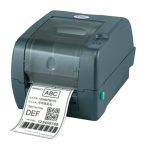These days, 2D barcode scanners are becoming more and more prevalent. The main reason being is that you can pack so much more information into a 2D barcode than you can with your conventional 1D linear barcodes.
A 1D barcode typically is between 8-15 characters. A 1D barcode is also just a number that acts as a link back to a record where other data is available for this barcode #. Where as a 2D barcode is almost a database in itself with up to 2000 characters that can be stored in one single 2D barcode.
There are also many types of 2D barcodes (barcode symbologies)that are being used. PDF417, MicroPDF417, Composite, RSS, TLC-39, Datamatrix, QR code, Micro QR code, Aztec, MaxiCode, and Postal Codes including Australian Postal barcodes ( also called 4 state barcodes).
When choosing a 2D barcode scanner, think about the application its going to be used for. The reason being is that there are multiple types of 2D scanners available. These are cabled, cordless and PDA styles.
Cabled: The 2D scanner will be connected by an interface cable back to into your host. This is the cheapest and most cost effective solution if you can bring the 2D barcode to the scanner.
Cordless: The cordless 2D scanner will be connected via bluetooth or RF, back to your host. A much better option if you need the freedom to scan 2d barcodes and not be restricted by a cable. Cordless 2D bar code scanners will be more expensive than cabled 2D bar code scanners and will range in price depending on coverage (10m – 90m) and robustness you wish to acquire. A cordless 2D bar code scanner can also have memory capabilities. This is a great option if you need to work outside the operating range of the device.
PDA: We call these mobile computers in our industry. A PDA scanner will give you a lot more programming options where you also need to scan other fields of data that the 2D barcode cannot give you.
Applications For 2D Bar code scanners.
Healthcare: The healthcare industry constantly faces various challenges. Doctors and nurses hold patients’ lives in their hands. They also have heavy workloads and long working hours but human errors are unacceptable. So barcode scanners are being used more prevalent now to overcome this human error.
More and more information needs to be embedded within the 2D barcode of medicines dispatched. Such as manufacturer, batch #, expiry date etc etc. This is also to help combat counterfeit medicines which are becoming an increasingly serious problem. It is also challenging to keep medical records up-to-date and maintained at all times. Any wrong data can have serious consequences for the patient – patients can easily be given fake drugs or repeated dosages of medicine.
Event Management: 2D barcodes are becoming quite frequently used for event management. Once again, the benefits of 2D barcodes are at play here. When a 2D barcode is scanned, you can be capturing the visitors name, company, address, phone number, email address, interests, demographics…..etc etc. Very valuable data for event organisers and marketing departments.
Consumer Advertising – With the popularity of smart phones, dedicated 2D barcode scanners are not chosen for scanning the advertising qr barcodes. Why would they be when most people these days have a smart phone to do this. However, when qr codes are sent to smart phones for events, these qr barcodes have to be scanned. And in any commercial application, where there are more than 20-30 qr codes to be scanned, a dedicated 2d barcode scanner wins for speed and ease of use.
Lastly, a 2d barcode scanner can scan not just 2d barcodes but also 1D barcodes. Where as a conventional 1d barcode scanner can only scan 1D barcodes. It cannot scan 2d barcodes.
- Stocktake Scanner – PDA Application Software

- PDA Barcode Scanner – Handheld Mobile Computers – Definitive Guide To Choosing a PDA Scanner.

- Barcode System – No Paper! No Pen! No Errors! Save Time & Money

- Barcode Software – Free Or Paid Barcode Software? Which is Best For Me?

- Wireless Barcode Scanners – There Are Only One Type? Wrong!


